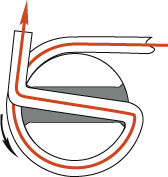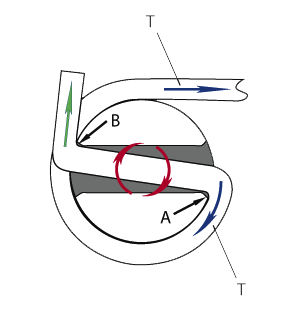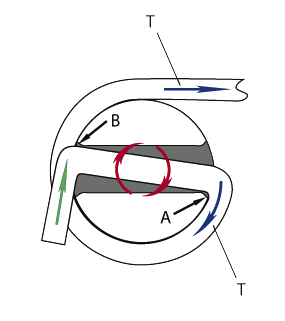
The picture on the left shows a cross-section of a standard tuner through the eyelet.
The string is pulled tight and wrapped around the spindle as shown by the arrow.
The free end is passed through the eyelet and hitched back against the opposite edge of the eyelet to create the important Z-lock which prevents the string from disengaging while it is being brought up to tension.
The Z-lock is basically a torque lock. As the string comes under load, tension in the string pulls the near end of the Z-lock against point A.
The straight section of the string housed within the eyelet pivots on the edge of the eyelet at A, rotating as shown by the red arrows, pulling the distant end of the Z-Lock against the opposite edge, B. This prevents the string from slipping through the eyelet as the string is brought up to tension.
The Z-Lock only works when the string is under load so when the string is removed it simply slides through the eye unimpeded.
A common error, shown below left, is to hitch the string in the wrong direction so that the string forms a "D" rather than a "Z" where it passes through the eyelet. This renders the lock ineffective.
Although I haven't discussed the complications of locking tuners here the Z-lock is an important enhancement for any tuners with internal locking pins (as opposed to the far superior torque locking types as found on the Gotoh Magnum Lock or the early PRS locking tuners) as the clamping area of spindle-pin lock tuners is inadequate on its own.








